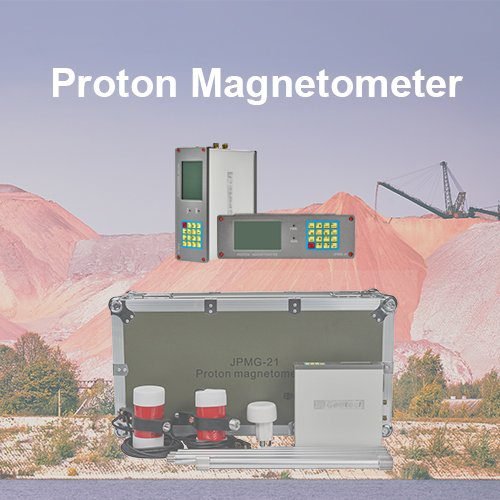Welcome to Geotech!

What is Electrode Arrays?
A Comprehensive Guide to Modern Resistivity Imaging Techniques
Technical Definitions and Evolution
Electrode arrays are systematic arrangements of current and measurement electrodes designed for efficient subsurface resistivity data acquisition. Unlike traditional DC resistivity sounding, which relies on single-point measurements, modern high-density electrical methods use multi-channel synchronous acquisition technology, enabling the collection of thousands of data points in a single deployment. This advancement has made 2D/3D electrical resistivity imaging (ERT) feasible.
Key breakthroughs include:
- Spatial Sampling Density: Electrode spacing has been reduced from 10-50m (traditional methods) to 1-5m, improving vertical resolution by 5x.
- Configuration Flexibility: Supports automatic switching among 12 array types, including Wenner, Dipole-Dipole, and Schlumberger.
- Intelligent Control: Utilizes distributed electrode switchers for millisecond-level current sequence switching.
Technical Comparison: 2D vs. 3D Resistivity Imaging
| Dimension | 2D Imaging | 3D Imaging |
|---|---|---|
| Depth Range | Typically <100m | Up to 300m (with high-power systems) |
| Data Volume | 500-2,000 data points per profile | Gridded data exceeding 100k points |
| Applications | Linear structures (faults, karst) | Complex geology (mines, ore bodies) |
| Inversion Time | 5-20 minutes (standard workstation) | 2-8 hours (GPU acceleration needed) |
3D electrical resistivity tomography (ERT) uses cross-grid layouts to build true 3D models. GEOTECH’s GPR-8000 system demonstrated a <2m positioning error for coal mine goafs, improving accuracy by 46% compared to 2D methods.
Forward and Inverse Data Modeling
Forward Modeling:
- Dominated by finite element method (FEM), achieving 0.1m-level precision for complex terrains.
- Hybrid boundary conditions enhance computational efficiency by 3x.
Inversion Algorithms:
- Least Squares: Baseline for homogeneous strata.
- Conjugate Gradient (CG): Reduces memory usage by 60% for large sparse matrices.
- Neural Network Inversion: GEOTECH’s patented technology, trained on 100k+ datasets, speeds up inversion by 8x.
Engineering Applications and Case Studies
Case 1: Karst Groundwater Detection
In a Yunnan village, a 120-electrode Schlumberger array:
- Located an 82m-deep karst conduit with a water yield of 411m³/day.
- Precisely delineated low-resistivity zones (<50Ω·m) for fractured aquifers.
Case 2: Tunnel Advance Prediction
For the Zhengwan High-Speed Rail project:
- Achieved 150m ahead prospecting.
- Accurately identified the F9 fault zone (error rate <5%).
Case 3: Contaminant Plume Monitoring
Combined with time-domain IP (induced polarization) data:
- Modeled pollutant diffusion rates dynamically.
- Inferred heavy metal concentrations with R²=0.89 correlation.
Advantages and Limitations
Strengths:
✅ Multi-parameter fusion: Resistivity + IP + spontaneous potential.
✅ Efficiency: 120-channel systems survey 2.5km/day (vs. 0.3km for traditional methods).
✅ Smart integration: GEOTECH ERI-Cloud enables real-time inversion.
Challenges:
⚠️ High-resistivity shielding: 40dB signal attenuation in basalt-covered areas.
⚠️ Urban interference: Stray currents reduce SNR to <15dB.
⚠️ Depth constraints: Max. 80m in dry sandy layers with standard setups.
Future Trends
- AI-Driven Analysis: Deep learning for anomaly recognition (>92% accuracy).
- Multi-Physics Fusion: Joint inversion of resistivity, seismic, and geomagnetic data.
- Real-Time Monitoring: 5G + edge computing for second-level updates.
Further reading | Technical solutions related to this article
In the field of resource exploration and engineering testing, accurate data is the key to success. As an innovator of resource and environmental instruments, Geotech has always taken high-precision electrical exploration technology as its core to provide reliable solutions for global users.
If you want to learn more about how the [Electrical Exploration System (ERT)] can help mineral exploration and geological research, please click on the electrical instrument product page to explore details, or visit Geotech’s official website to view the full range of exploration equipment (covering more than ten categories of products such as magnetometers, seismic nodes, and geological radars). Our technical team is on call at any time to customize scientific solutions for your project – making unknown strata a controllable data map.
-1.png)



